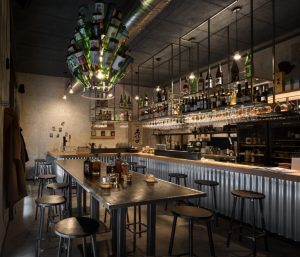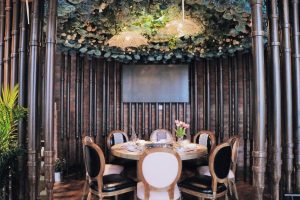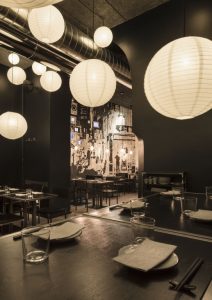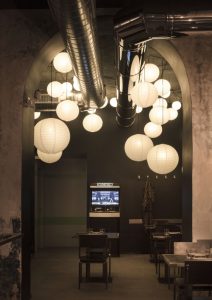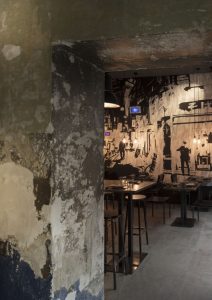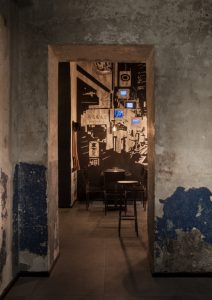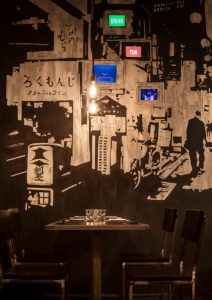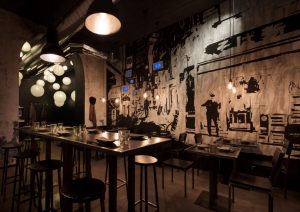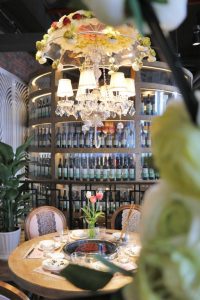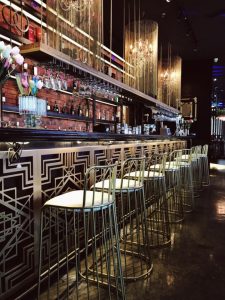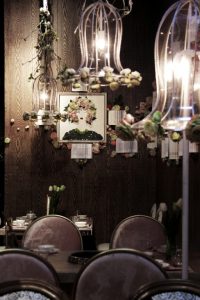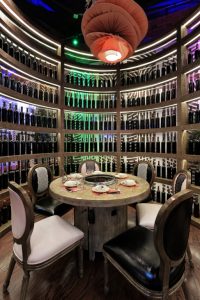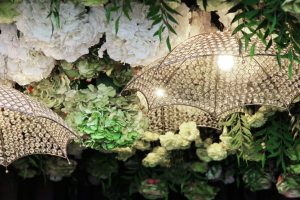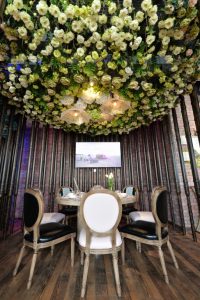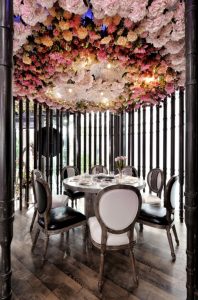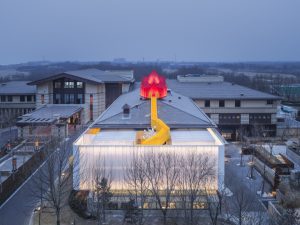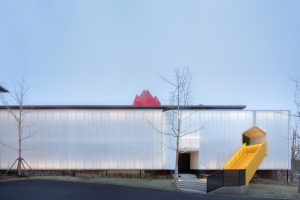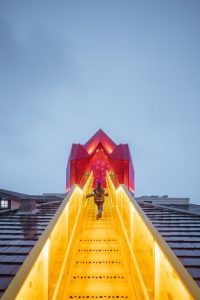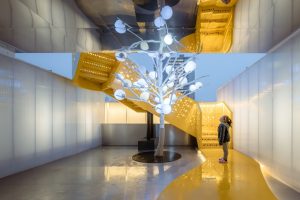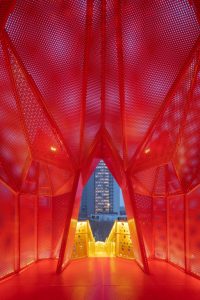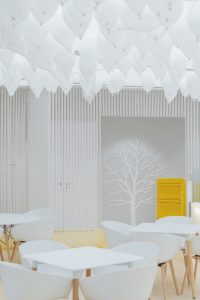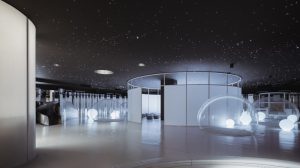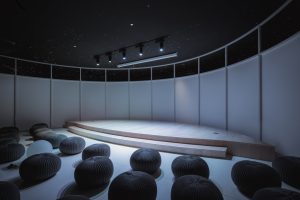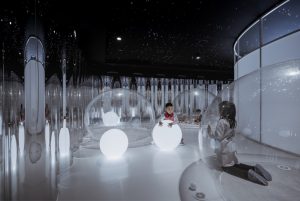
Dining out is one of life’s greatest pleasures. With the advent of cooking as art, concept menus with sound pairings and surroundings that enhance the aesthetic of a plate, that pleasure goes far beyond just the food. Eating at a restaurant is now expected to be an experience – one, ideally, that’s Instagrammable. That makes design one of the key ingredients.
According to the National Restaurant Association (Washington, D.C.), industry sales topped $799 billion in 2017. And with more than one million restaurants across the U.S., competition is rife. Standing out from the crowd can make or break success in a market where franchises, fine dining establishments and pop-ups are found shoulder-to-shoulder.

Kanpai | Photography: Santi Caleca, Italy
DESTINATION DINING
Making a unique mark on Milan’s chic dining scene was what inspired Kanpai’s designers – architecture firm Vudafieri-Saverino Partners (Milan) – to draw on some of the key restaurant design trends of 2018: exposed stone and wood paneling, striking lighting and feature walls. This Japanese eatery in the Porta Venezia district “aims to bring contemporary Japan to Milan; the urban environment of Tokyo was our reference, rather than ascetic and contemplative Kyoto,” reveal Tiziano Vudafieri and Claudio Saverino, partners at Vudafieri-Saverino Partners.

Kanpai | Photography: Santi Caleca, Italy
Advertisement
Characterized by a “strong identity and linear simplicity,” each of the restaurant’s environments are distinctly different. Metal elements are fused with bamboo in the bar; a monochrome mural by street artist Alessandro Di Vicino decorates the back wall in the second area; in the third dining room, 50 Japanese lanterns are suspended in shades of yellow and orange. Some of the space was repurposed too. “We built on the pre-existing features we discovered during renovation,” say Vudafieri and Saverino. The authentic Japanese experience is realized in Kanpai’s attention to detail: the bathrooms even feature the announcer’s voice from the Tokyo Metro Yamanote Line to transport diners to their destination.

Aranya | Photography: Creatar Images, China
ALTERNATE REALITY
Designing a family-friendly space for Aranya, a resort complex in coastal Qinhuangdao in China, was child’s play for architecture firm Wutopia Lab (Shanghai). The goal was to create a space that would shift the focus to the dining experience for younger guests. “We regard design as the background for food display. With a pure backdrop, kids will pay more attention to the food,” explains Head Designer Yu Ting.

Aranya | Photography: Creatar Images, China
Fantasy and imagination were the design directives, resulting in an ethereal white space with a few well-placed strokes of yellow and red. There are funhouse mirrors, gravity-defying vertical gardens, giant soap bubbles and a balloon-strewn ceiling. “We used exaggerated artistic techniques to turn daily life into a magical reality,” Yu says.

Flower 17 | Photography: Hu Kun & Chun Cheng Toutiao Photography Studio, China
Advertisement
FLOWER POWER
Going green is a pivotal trend this year: bringing the outside in to restaurants with greenery and landscape elements. Flower 17 in Kunming in China’s Yunnan province has embraced this concept wholeheartedly. Its romantic design is accented entirely with foliage – from the living walls that frame the entrance to the ferns that line the walkways and the blooms that hang from the ceiling alongside light fixtures.
It was a labor of love, and “a large part of the site was painted by hand in order to ensure the vivacity of the decoration,” explains Liu Jing, Chief Designer at Fan Life (Shenzhen).

Flower 17 | Photography: Hu Kun & Chun Cheng Toutiao Photography Studio, China
Handmade accessories, including crystal lampshades and suspended candles, add vintage touches to an interior that is heavily influenced by art deco geometrics. Liu describes it as “a space that’s close to nature, offering diners an interactive experience that’s natural, rhythmical and free.”

FOOD FOR THOUGHT
At a time when every angle of a dining area appears on social media the moment a meal is served, restaurants are tasked with creating a narrative in which the diner can take part. From lighting to themed accents, the design has to both feature and fade into the background to create a seamless experience – a tall order for the Instagram-driven restaurant industry in 2018.
Advertisement
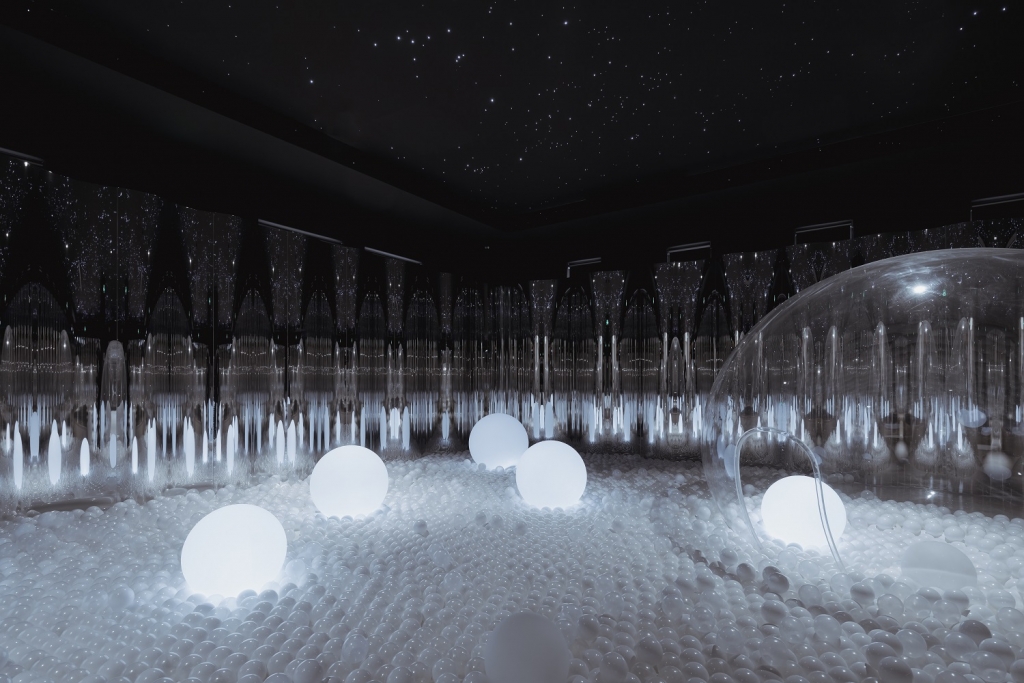
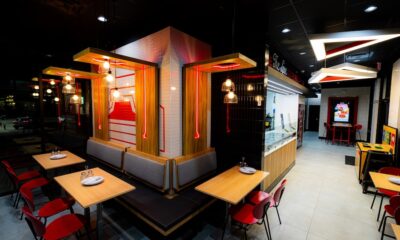
 Headlines1 week ago
Headlines1 week ago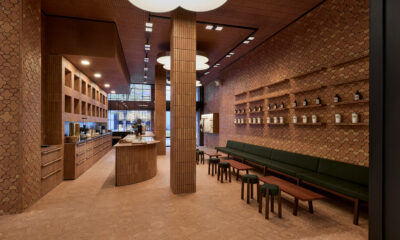
 John Ryan2 weeks ago
John Ryan2 weeks ago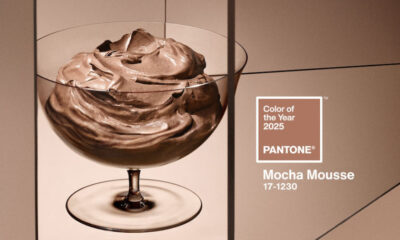
 Headlines7 days ago
Headlines7 days ago
 Headlines2 weeks ago
Headlines2 weeks ago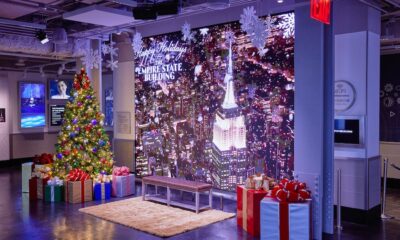
 Headlines1 week ago
Headlines1 week ago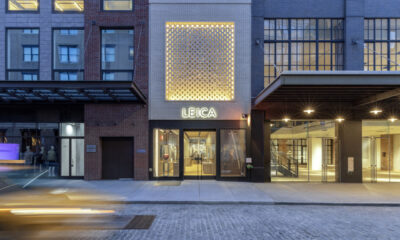
 Retail Buzz3 days ago
Retail Buzz3 days ago
 Headlines1 week ago
Headlines1 week ago
 Headlines1 week ago
Headlines1 week ago








